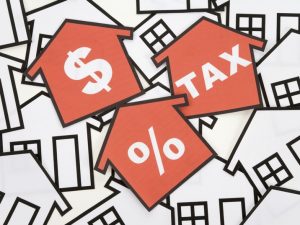
One of the financial benefits to owning your home (personal residence) is that the gain from the sale of home can be tax-free up to $500,000 for married couples and $250,000 for single filers. To take advantage of this:
- You must have lived in the home for two years out of the previous five years (or have an acceptable reason for leaving i.e. job transfer, health, unforeseen circumstances etc.)
- The home must also be your principle residence (not your Park City condo you live in for several weeks each year during ski season).
We already know this though, right? It’s our favorite memory of President Clinton and Newt Gingrich’s time together (at least our favorite tax break made permanent)!
But what happens if you don’t move in to the home right away though? Let’s say you originally intend to have the house as a rental, can you move in later and still qualify for the capital gain exclusion? The short answer is yes, BUT…
A property held as a business investment or a rental can be transitioned to a personal residence for purposes of the gain exclusion provision, but two important limitations have been created that prevent taxpayers from utilizing the full gain exclusion for the entire period owned.
- First, the gain exclusion amount cannot include any depreciation taken while the home was used for business or investment. This seems fair, you got the benefit of depreciation to offset rental income or other income on your personal return.
- Second, the gain exclusion is only available for the periods of ownership to which the property was used as a primary residence. In addition, you must live in the home for at least two of the past five years prior to sale.
Example
You purchased a home the beginning 2010 and held it as rental for four years. During this time you made a little money each month while the mortgage was being paid by someone else (your tenant). At the beginning of 2014, you decided to move into the home yourself. The property remained your primary residence until the end of 2017. You owed the property for a total of eight years with four years as a rental. You can exclude gain on the sale four of the eight years (4/8) you owned the home or in this case as luck would have it, 50% of the gain. Remember, the gain is the sale price at the end of 2017 minus your basis in the property (usually the price paid increased by costs and expenses, reduced by payments received). In the classic accounting example, your gain is $100,000, and you can exempt $50,000. If you owned the property as a rental for two years and lived in it for 8 before selling you would be able to exempt 80% of the gain. If the gain is $100,000, then that would mean you’d be able to exclude $80,000.
For the fun of it, let’s add another layer, a 1031 exchange! If you acquire a rental property in a like kind exchange and later convert it to a residence you must hold the property for at least five years before the gain exclusion can be applied. An important point of order, to qualify for 1031 exchange treatment, the property must be held (at least initially) for business or investment purposes. Sometimes plans change, and you need to use the property as your residence later on.
The above example still works for your 1031 exchanged property, because you held it for a total of eight years. You get exchange gain deferral and eventually some gain exclusion!
Takeaways
The gain exclusion provision is a great benefit to home ownership, and in the right scenario can be utilized by real estate investors. You will need to actually live in the property at some point for at least two years, and the longer you do the better the exclusion gets.
While this plan may not be advisable for every property you rent out, it will be a great way to get that Park City property to eventually qualify to exclude some gain. If you would like additional information on navigating an exchange to rental to primary residence, we would love to help!